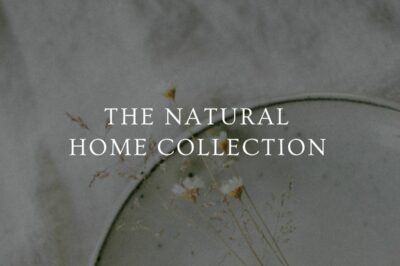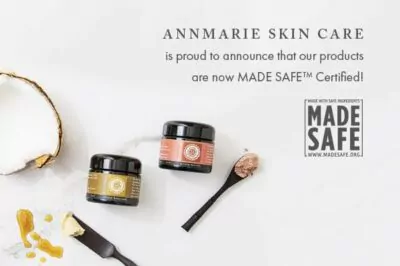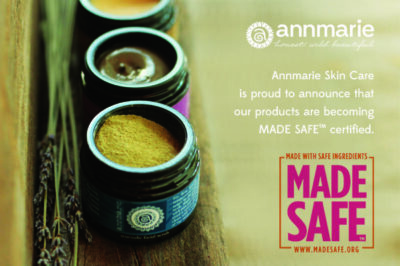Contributed by our friend, Laura
With the holidays fast approaching, many of us are starting to plan parties, dinners, and get-togethers with friends and family. Now is the time when we start scrolling through pinterest for recipes and decorating ideas and start writing lists of things we need to entertain. Fun!
As we’re buying a wide range of things in preparation for the holidays, it’s important to pause and make sure that the things we’re buying are safe and healthy—not only for us, but for all those we share the holidays with.
Many of the items we bring into our homes, especially during the holidays, can expose us to chemicals that can contribute to poor health, including immediate things like asthma, allergies, headaches, migraines, as well as more chronic issues like weight gain, hormonal imbalances, and increased cancer risk.
While we certainly can’t keep every single potentially harmful toxin out of our lives, there are plenty of small changes we can make that can have a big impact!
4 Tips for Creating a Healthier Home for the Holidays!
1—Go Fragrance Free
Entertaining usually means a harried rush to get your house presentable for friends and fam. Enter: the scented candle, plugins, diffusers, fabric sprays and incense.
While on the surface, these products can add a pleasant smell to your home (hello pumpkin spice!), they’re also contributing to indoor air pollution and exposure to hormone altering chemicals.
We all know that outdoor air can be mega polluted, especially in big cities. But did you know that indoor air can be much worse? According to the Environmental Protection Agency, indoor air can be 2-5 times worse than outdoor air, even in industrial areas and heavily polluted cities!
Where’s this pollution coming from, you ask? It’s coming from volatile organic compounds or VOC’s being emitted from paints, furniture, carpeting, and it’s coming from all those stinky products we buy in an attempt to make our home smell like lemon biscotti, apple spice, or rustic pine.
Most of these synthetically scented products contain phthalates, which are chemicals that serve as a fixative for both color and scent in products ranging from scented candles and plugs-ins, to laundry detergent, dish soap, and even most personal care products. Since you’re on the Annmarie Skincare blog, you likely already know that 100% of their products are formulated without phthalates, or other synthetic chemicals.
But just because your plug-in isn’t being applied to your skin, doesn’t mean those pesky phthalates aren’t entering your body! In fact, inhalation is the fastest way for a compound to enter the body outside of injection, so smelling those stinky fragrances means they’re entering your body. And this is bad because phthalate exposures are linked to a long list of health issues, including hormone disruption, insulin resistance, weight gain, and even fertility issues.
Those are solid reasons to avoid synthetic fragrances period, but especially during the holidays when we tend to be surrounded by so many!
So what is the best air freshener? Well, no air freshener!
Opening your windows and letting in some fresh air, even just for a few minutes a day, and yes, even if it’s cold out, is the first step in getting any pre-existing odors out of your home.
If that’s just not going to cut it, fire up the stove and simmer a small pot of water with cinnamon sticks, cloves and citrus rind and your home will smell amazing in minutes.
Lastly, you can diffuse high quality essential oils in your home to make it smell amazing any time.
2—No Plastic For Leftovers
A natural byproduct of big holiday meals (and my favorite part about the holidays) are leftovers.
After a few hours of eating together, people start winding down and get ready to leave. You quickly look at all the leftover food and go “uuh, there’s no way we’re going to be able to eat all this… who wants to take home leftovers??!” Then you raid your pantry for all the plastic tupperware containers you can find, and starting packing up food to go.
When our lovingly cooked holiday meals (or any meals, holiday or not!) have direct contact with those plastic containers, we risk exposing ourselves and our loved ones to hormone altering chemicals. Certain chemicals that are used in the production of plastics, like bisphenol-a and phthalates, are not bound, from a molecular standpoint to the plastic, resulting in those chemicals migrating out or shedding.
A study published in the journal Environmental Health Perspectives in 2011 found that most plastics release chemicals that exhibit “estrogenic activity.”
This means that chemicals that behave like estrogen are releasing from plastic food containers into our foods and beverages and ultimately into our bodies, where they can disrupt our hormones in ways similar to the phthalates found in our air fresheners. The one that people are most familiar with is BPA or bisphenol-a.
Hundreds of epidemiological studies have been published that link BPA, even at the low doses we’re seeing in people, to a long list of health issues that affect nearly every body system, including diabetes, insulin resistance, childhood asthma, breast cancer, infertility, and so many others.
And that flood of BPA-free plastics on the market? They’re sadly no better, as manufacturers have simply swapped out BPA, for similar chemicals in the same family: BPS and BPF, both of which are proving to be just as bad, if not worse!
Instead of sending your loved ones home with plastic containers that release hormone altering compounds, choose glass instead!
Stock up on quart sized Mason Jars, which you can find for less than $10 for a case of 12 at places like Target or Amazon. If you know you’ll be sending people home with leftovers in advance, ask them to bring 2-3 glass containers of their own (no need to hunt down your containers afterwards!).
A simple request that can cut exposures to chemicals that aren’t safe!
3—Take Off Your Shoes
Did you know that we track far more that dirt into our homes on the soles of our shoes?
A University of Arizona study found an average of 421,000 different types of bacteria on the soles of shoes, including e coli, and coliforms (aka poop) on 96% of samples. Yuck!
We also track in pesticides from lawns, heavy metals, and chemicals called polycyclic aromatic hydrocarbons, or PAH’s, which are found in car exhaust. And we track these right into our homes every time we come home.
If you have carpeting in your home, these become “sinks” or containers for all these contaminants to hide out. Kids and pets, who spend more time on the carpets tend to have higher levels of these kinds of chemicals in their bodies. While the ‘no-shoes’ rule is easier to implement when it’s just you and your family, it definitely becomes harder when you’re entertaining for the holidays. For sure, it can be a bit awkward to invite your dinner guests to remove their shoes, but there are a few things you can do to make it easier!
- Have a designated shoe area, preferably by the coats, right as you walk in the door.
- Have extra woollen socks or house slippers handy in case it’s chilly outside
- Don’t make a big deal about it: just casually say “we’re a no-shoes household… we’ve got a spot for your shoes and slippers if your feet get cold!” and leave it at that
Not only will this keep your carpets cleaner, but it can cut down on the amount of toxins that build up inside your home.
4—Check for RoHS Compliance on Holiday Lights
Holiday lights, whether strung around a tree, or over a mantle is one of the easiest ways to make your home feel festive and cozy during the holidays. What kid doesn’t love stringing lights around a tree, or down a staircase banister?
Most of the plastics in cords and lights are made of PVC or polyvinyl chloride, which is typically hard and rigid (think: PVC pipes). In order to make those plastics soft and flexible, lead or other heavy metals are often added, along with flame retardants, and the same phthalates that are in your scented candles.
These heavy metals and chemicals aren’t tightly bound to the materials they’re in, so when we touch items that contain them, they can transfer to our skin, and from there into our bodies.
In the European Union, chemicals are regulated more tightly than in the US. In 2003 they issued a directed called the Restriction of Hazardous Substances, or RoHS for short.
RoHS restricts the use of substances in electronic equipment, specifically, lead, mercury, cadmium, certain phthalates and certain types of flame retardants. Checking for RoHS compliant on electrical cord labels is how you can be sure that you’re holiday lights, or any of the electronic gifts you may give don’t have any of those harmful substances!
Bottom line: We want our holidays (and our every-days) to be healthy and safe! While we cannot avoid all chemicals in life, we can certainly take small steps to reduce our exposures.
References:
“Volatile Organic Compounds' Impact on Indoor Air Quality.” EPA, Environmental Protection Agency, www.epa.gov/indoor-air-quality-iaq/volatile-organic-compounds-impact-indoor-air-quality.
Colborn, Theo, Frederick S. vom Saal, and Ana M. Soto. “Developmental effects of endocrine-disrupting chemicals in wildlife and humans.” Environmental health perspectives 101.5 (1993): 378.
Trasande, Leonardo, et al. “Urinary phthalates and increased insulin resistance in adolescents.” Pediatrics 132.3 (2013): e646- e655.
Janesick, Amanda, and Bruce Blumberg. “Minireview: PPARγ as the target of obesogens.” The Journal of steroid biochemistry and molecular biology 127.1 (2011): 4-8.
Duty, Susan M., et al. “Phthalate exposure and human semen parameters.” Epidemiology 14.3 (2003): 269-277.
Yang, Chun Z., et al. “Most plastic products release estrogenic chemicals: a potential health problem that can be solved.” Environmental Health Perspectives 119.7 (2011): 989.
Shankar, Anoop, and Srinivas Teppala. “Relationship between urinary bisphenol A levels and diabetes mellitus.” The Journal of Clinical Endocrinology & Metabolism 96.12 (2011): 3822-3826.
Washam, Cynthia. “Exploring the roots of diabetes: Bisphenol a may promote insulin resistance.” Environmental health perspectives 114.1 (2006): A48.
Donohue, Kathleen M., et al. “Prenatal and postnatal bisphenol A exposure and asthma development among inner-city children.” Journal of Allergy and Clinical Immunology 131.3 (2013): 736-742.
Pupo, Marco, et al. “Bisphenol A induces gene expression changes and proliferative effects through GPER in breast cancer cells and cancer-associated fibroblasts.” Environmental health perspectives 120.8 (2012): 1177.
Meeker, John D., et al. “Semen quality and sperm DNA damage in relation to urinary bisphenol A among men from an infertility clinic.” Reproductive toxicology 30.4 (2010): 532-539.







